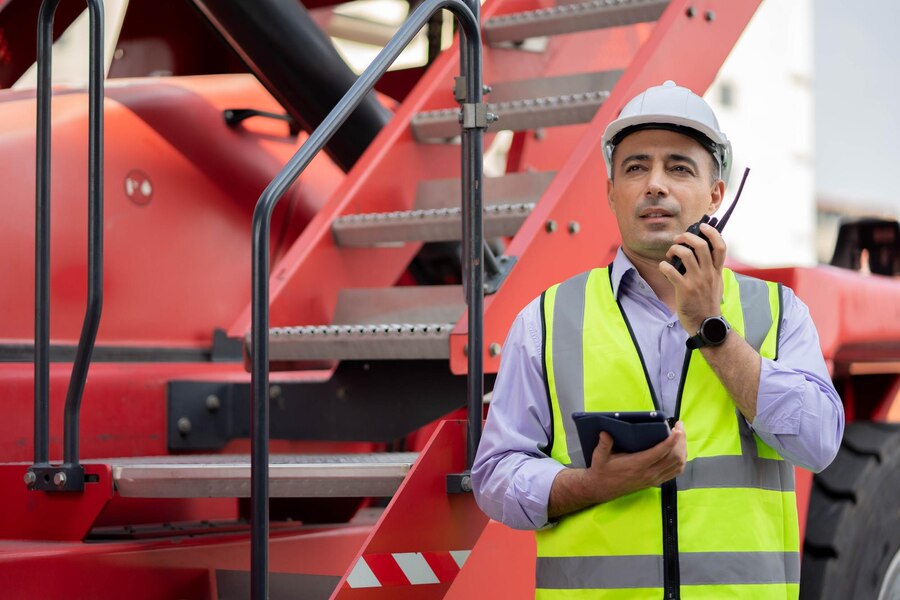Industrial activities that carry and transfer huge items must be safe. The use of crane scales adds complexity to these operations since they correctly measure load weight and ensure safe lifting. In this essay, we examine how crane scales in industrial settings emphasize safety, reducing risks, improving processes, and preventing accidents.
1. Load monitoring/overload protection
Load monitoring and overload prevention are key crane scale safety features. These technologies continually check the load being lifted and inform operators if it exceeds safe limits. Overloading scenarios that might damage the crane and cause serious safety concerns are prevented by establishing specified thresholds based on its lifting capability and load ratings.
Load monitoring systems detect load weight in real time using load cells and sensors. Once received, the crane’s control system compares this data to specified criteria. The technology alerts the operator visually and audibly if the weight exceeds the limit, requiring fast action.
Some crane scales include automated overload protection and alerts to avoid dangerous lifting. Auto load cutoff systems deactivate crane operation when the load exceeds the maximum permitted weight, and emergency stop devices cease lifting operations in overload situations.
2. Regulatory and Safety Standards
Compliance with industry norms and safety requirements is another important crane scale safety factor. OSHA, ANSI, and ISO enforce strict safety standards for lifting equipment operations in industry.
These laws and standards guarantee crane scales satisfy safety and performance criteria. The design and construction criteria include load rating capabilities, structural integrity, material strength, electrical safety, and electromagnetic compatibility (EMC).
Certain industries or applications may need extra regulations and certifications for crane scales. For instance, crane scales used in oil and gas facilities or chemical plants must be explosion-proof and intrinsically safe to avoid ignition threats and assure safe operation.
Crane scales assure consumers that they were developed, produced, and tested to satisfy the highest safety standards by following safety compliance and regulatory regulations. This reassures operators and employers that their equipment is safe, dependable, and compatible with rules, reducing the risk of accidents and liability.
3. Operator Certification and Training
Safe crane scale operations demand qualified and competent lifting equipment operators. Crane scale operators require training and certification to work safely and efficiently.
Crane scale operators get training in equipment familiarization, load management, safety, emergency protocols, and regulatory compliance. Operators learn to read load ratings and capacity charts, execute pre-operation checks, lift safely, and handle emergencies and equipment failures.
Crane scale operators might be certified by equipment manufacturers, industry groups, or regulatory-accredited training providers. To assure operator competency, these programs provide written exams, practical tests, and performance reviews.
After initial training and certification, crane scale operators need refresher training and continuing education to stay current on safety, technology, and regulations. Regular training and competence evaluations promote safe operating habits, highlight areas for improvement, and adhere to changing industry requirements.
4. Inspection and Maintenance Protocols
Crane scales need regular maintenance and inspection to operate safely. Crane scales, like any mechanical or electrical equipment, wear and tear, environmental conditions, and faults may affect performance and safety.
Crane scale maintenance includes regular inspections, preventative maintenance, and calibration to ensure accuracy and performance. Visual inspections for damage, corrosion, and wear may be combined with functional examinations of load cells, sensors, displays, and control systems.
Lubricating moving parts, replacing old parts, and cleaning sensors and interfaces are preventive maintenance procedures to maximize performance and lifetime. Periodic crane scale calibrations compare data to established reference weights to ensure accuracy and fix discrepancies.
Conclusion
Safety is paramount in crane size industrial activities that lift and transfer huge items. Load monitoring and overload prevention, safety compliance and regulatory requirements, operator training and certification, and maintenance and inspection methods ensure crane scale safety throughout its use.
